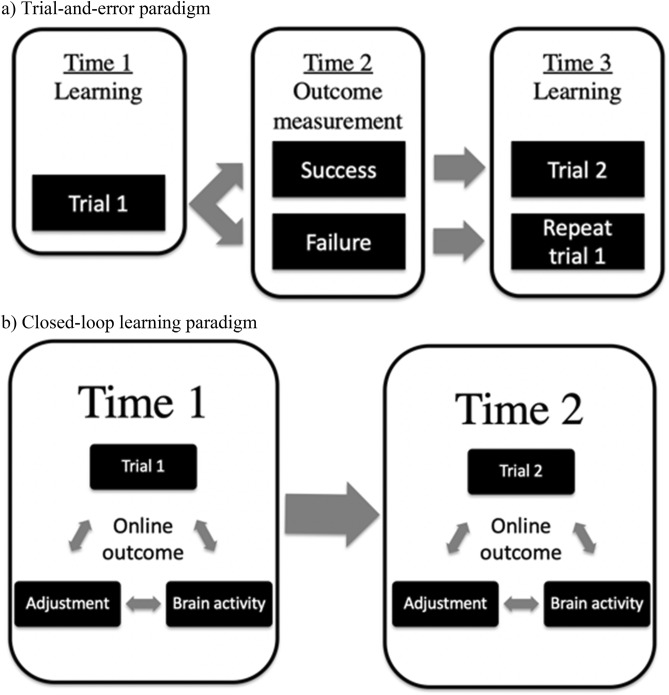Figure 1.
Illustrations of traditional versus looped learning paradigms. (a) In a traditional trial-and-error learning paradigm, the entirety of time 1 is spent learning. A separate instance, time 2, is dedicated to measuring the outcome of learning, and can either result in success or failure. The next step, time 3, is either dedicated to learning trial 2 (if the result of outcome measurement was success) or repeating trial 1 (ideally with an adjustment, and in the case of failure at time 2). (b) In a closed-loop learning paradigm, time 1 is spent learning, but includes online error-detection based on brain activity and real-time adjustment, which modifies the manner in which learning occurs to ensure successful learning before moving onto trial 2. Arrows are bidirectional since learning and adjustment has an effect on the brain, which in turn drives the learning process and necessary adjustment.

